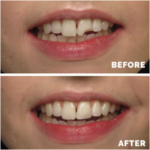Introduction
Welcome to our comprehensive guide on COPD stages, causes, and treatment. In this article, we aim to provide you with in-depth knowledge and valuable insights into chronic obstructive pulmonary disease (COPD). As experts in the field, we understand the importance of high-quality content that stands out and delivers value. So, let’s dive into the world of COPD and equip you with the knowledge you need to effectively manage this condition.
Understanding COPD
Chronic obstructive pulmonary disease, commonly known as COPD, is a progressive lung disease that affects millions of people worldwide. It is characterized by restricted airflow and persistent respiratory symptoms, making it challenging for individuals to breathe properly. COPD primarily includes two main conditions: chronic bronchitis and emphysema. These conditions often coexist and share similar risk factors and symptoms.
The Stages of COPD
COPD is typically categorized into four stages based on the severity of symptoms and lung function impairment. Understanding these stages can help individuals and healthcare professionals develop personalized treatment plans.
Stage 1: Mild COPD
In the early stage of COPD, individuals may experience mild symptoms such as occasional coughing and shortness of breath. Lung function is still relatively preserved, with a forced expiratory volume in one second (FEV1) of about 80% or higher compared to the predicted normal values.
Stage 2: Moderate COPD
As COPD progresses to the moderate stage, symptoms become more noticeable and affect daily activities. Coughing and shortness of breath are more frequent, and lung function further declines, with an FEV1 between 50% and 80% of the predicted normal values.
Stage 3: Severe COPD
Severe COPD significantly impacts an individual’s quality of life. Symptoms worsen, and daily activities become increasingly challenging. Shortness of breath, wheezing, and fatigue are common. Lung function further decreases, with an FEV1 between 30% and 50% of the predicted normal values.
Stage 4: Very Severe COPD
At this advanced stage of COPD, also known as end-stage or very severe COPD, individuals experience severe respiratory symptoms even at rest. Quality of life is greatly affected, and exacerbations are more frequent. Lung function is severely impaired, with an FEV1 of less than 30% of the predicted normal values.
Causes and Risk Factors
Understanding the causes and risk factors associated with COPD is crucial for effective management and prevention. While smoking remains the leading cause of COPD, other factors can also contribute to the development and progression of the disease. These include:
Tobacco Smoke:
Smoking cigarettes, cigars, or pipes is the primary cause of COPD. The harmful chemicals present in tobacco smoke damage the lungs over time.
Environmental Factors:
Exposure to secondhand smoke, air pollution, dust, and chemicals in the workplace can increase the risk of developing COPD.
Genetic Factors:
In some cases, individuals with a deficiency of a protein called alpha-1 antitrypsin (AAT) are at a higher risk of developing COPD.
Age:
COPD is more common in individuals over the age of 40, as lung function naturally declines with age.
Treatment Options for COPD
While COPD is a chronic and progressive disease, various treatment options can help manage symptoms, improve lung function, and enhance the overall quality of life. Treatment plans are typically personalized based on the severity of COPD and individual needs. Here are some common approaches:
Medications
Several types of medications are used to treat COPD, including:
Bronchodilators:
These medications relax the muscles around the airways, helping to open them up and improve airflow.
Inhaled Corticosteroids:
Inhaled steroids help reduce airway inflammation, decreasing the frequency and severity of exacerbations.
Combination Inhalers: Some medications combine bronchodilators and corticosteroids to provide comprehensive treatment.
Pulmonary Rehabilitation
Pulmonary rehabilitation programs aim to improve lung function, enhance exercise tolerance, and reduce symptoms. These programs often include exercises, education, and support to help individuals manage their condition effectively.
Oxygen Therapy
In advanced stages of COPD, supplemental oxygen therapy may be necessary. Oxygen can help alleviate shortness of breath and improve overall oxygenation.
Surgical Interventions
In certain cases, surgical interventions such as lung volume reduction surgery or lung transplantation may be considered for individuals with very severe COPD.
Conclusion
In conclusion, we have explored the world of COPD, discussing its stages, causes, and treatment options. Armed with this comprehensive guide, you are better equipped to understand the complexities of COPD and take the necessary steps for managing the condition effectively. Remember, early diagnosis and appropriate treatment are crucial in slowing the progression of COPD and improving the quality of life for individuals living with this chronic disease.





